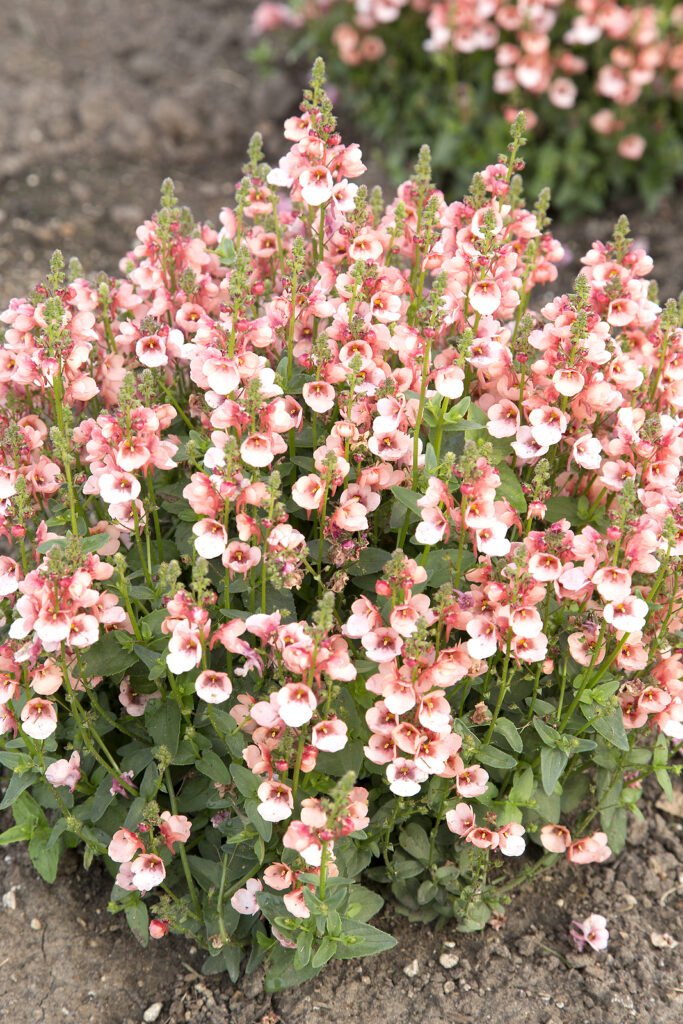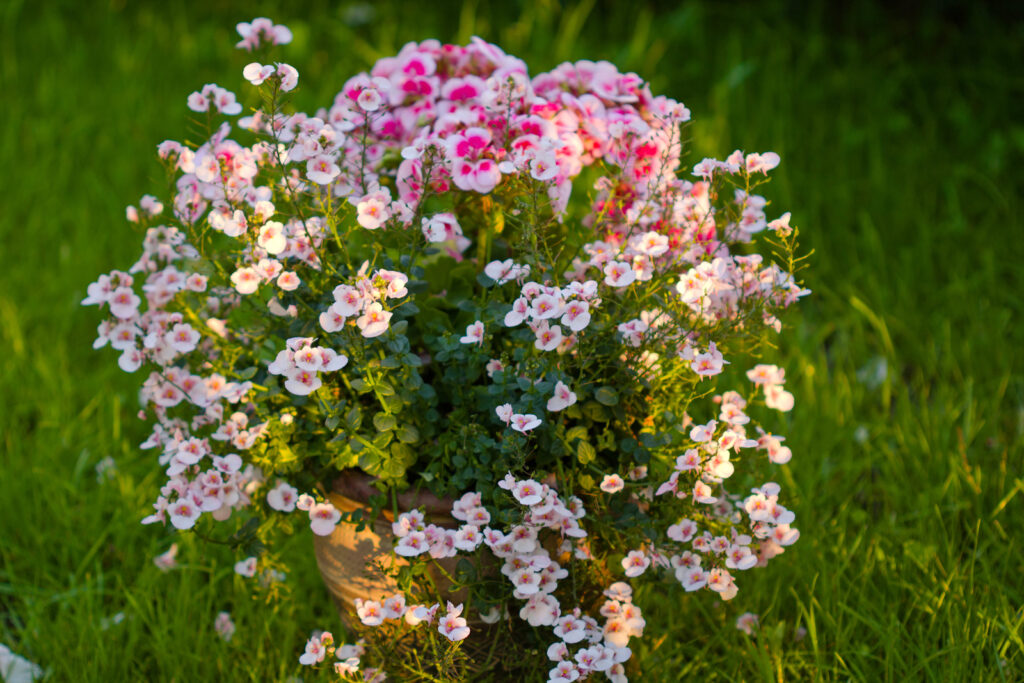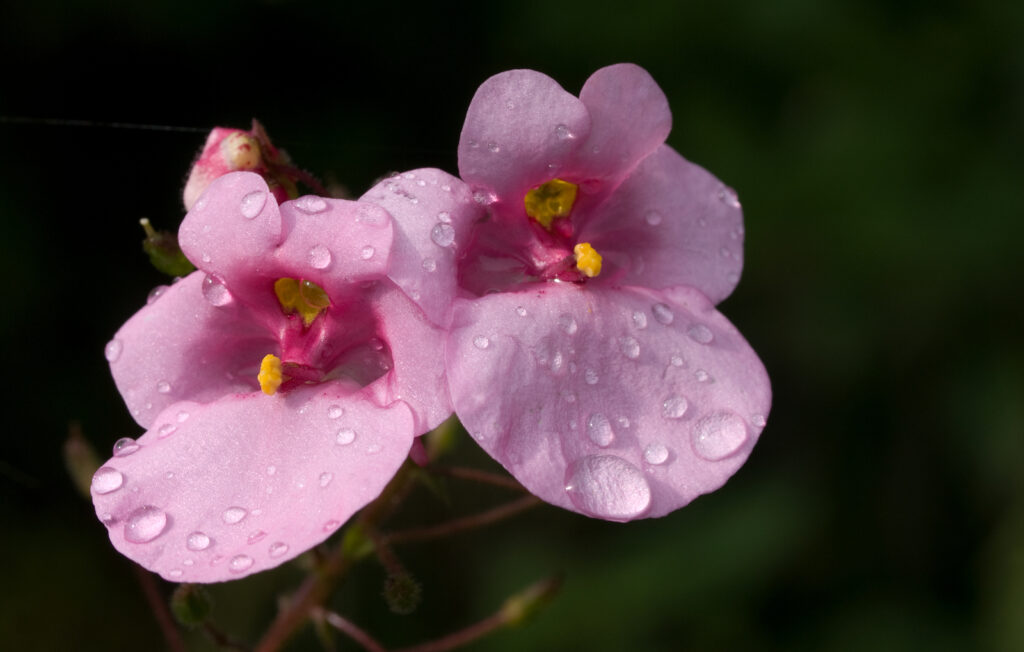Diascia–commonly called twinspur–produces spikes of pink to lilac flowers above heart-shaped tapering leaves from summer to fall. Twinspur is a great choice for growing in pots or the front of sunny beds or in containers.
Diascia has erect or sprawling stems and racemes of tubular flowers with five lobes or ‘petals.’ The bottom lobe is flared and larger than the others. The two upper lobes have backward-pointing spurs–thus the common name twinspurs.
Diascia will grow easily in average, well-drained soil. Grow Diascia in full sun except in hot summer regions where it is best placed in afternoon shade.
The Diascia genus contains about 50 species of annuals and perennials.

Get to know Diascia
- Plant type: Grows as an annual in Zones 2-7; grows as a perennial in Zones 8-10
- Growing Zones and range: 8-10
- Hardiness: Hardy to 10°F (-12°C); somewhat drought-tolerant; will not do well in wet soil
- Height and width: 10 to 12 inches (25-30cm) tall; 12 to 24 inches (30-61cm) wide
- Foliage: Ovate to heart-shaped or elliptic or linear, toothed mid-green leaves
- Flowers: Racemes of tubular, 5-lobed flowers, the lower lobes broad, the paired upper lobes have 2 backward pointing spurs
- Flower colors: Rose-pink, deep pink, and coral
- Bloom time: Late winter or early spring until fall
- Uses: Low growing for the front of mixed borders or containers
- Common name: Twinspur
- Botanical name: Diascia spp.
- Family: Scrophulariaceae
- Origin: South African mountains
Where to plant Diascia
- Grow Diascia in full sun in Zones 2-6; grow in part shade in Zones 7-11.
- Plant Diascia in average, well-drained soil. Does not do well in heavy clay or wet soil.
- Diascia does not flower well in regions with hot summers.
Diascia uses and companions
- Use Diascia at the front of a border, on a sunny bank, in a rock garden, or in containers.
- Good garden companions for Diascia include Aster frikartii, Campanula, Cosmos atrosanguineus, Iris, Stachys lanata, Veronica.

When to plant Diascia
- Set out Diascia seedlings in spring after the danger of frost has passed.
- Sow seed 8 to 1o weeks before the last frost in spring; germination takes about two weeks.
Planting and spacing Diascia
- Space Diascia 12 to 24 inches (30-61cm) apart.
- Sow seed 1/8 inch deep.
How to water and feed Diascia
- Keep the soil just moist, but do not overwater.
- Fertilize Diascia with an all-purpose fertilizer every 6 weeks or so.
Diascia care
- Trim Diascia back by one-quarter when blooms fade; this will rejuvenate the plant and promote new blooms.
- Remove plant when after it stops blooming in Zones 2-7.
- Divide perennial Diascia every 2 to 3 years in the fall.
Diascia pests and diseases
- Diascia may be attacked by slugs.
- Diascia is rarely beset by disease.

Diascia propagation
- Sow seed in spring when the soil has warmed or indoors before the last frost.
- Seeds germinate in 15 days at 60°F (16°C). Flowers appear about 14 weeks after seeds are sown.
- Divide suckering species in spring.
- Take softwood cutting in summer.
Diascia varieties to grow
- Diascia barberae is a low, mat-forming perennial often grown as an annual; bears loose, grows to 10 inches tall; erect racemes of pink flowers from summer to fall; cultivar D. ‘Ruby Fields’ bears salmon-pink flowers.
- D. rigescens grows to 12 inches tall; bears flowers in shades of pink; often grown as a cool-weather annual.















